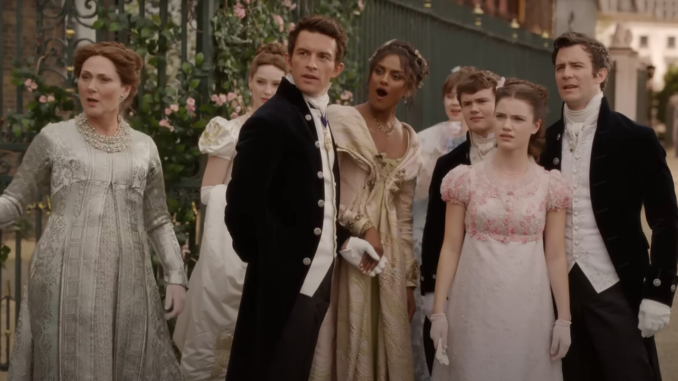
Bridgerton: Romance, Representation, and Modern Reflections
How Bridgerton Reflects Regency Norms and Modern Issues of Diversity and Body Positivity
Bridgerton fever continues to capture our imaginations, and while we want to ask what keeps us glued to our screens, let’s first consider what kind of viewer you might be. Are you watching to see if the show is faithful to Julia Quinn’s beloved novels? Perhaps you’re enthralled by the romantic adventures and butterflies the characters have? Perhaps, like me, you’ve fallen victim to the lure of marketing and social influence? Or are you a modern woman finding comfort in an age where finding a suitor is seen as the ultimate female achievement?
Let’s not kid ourselves, though; while the world has moved on, certain expectations remain. Women today still face social pressure to marry and start a family, although these pressures are now seen as choices. Unlike Lady Whistledown, who wielded her quill under the watchful eye of the queen, contemporary women have the freedom to choose their own path—or at least the right to claim that freedom.

For those unfamiliar with Bridgerton, here’s a brief, spoiler-free synopsis. Created by Chris Van Dusen and based on the novels by Julia Quinn, the series is set during the Regency period (1811-1820). The queen, Queen Charlotte, demands lavish balls and lavish weddings to maintain her influence and basks in the gossip of the ‘Ton. Her confidante, Lady Danbury, is like a modern-day matchmaker (a modern-day dating app with parental controls), arranging introductions for anxious mothers hoping their daughters will shine in front of eligible bachelors. Beware, dear reader, it is always the mothers who are solely responsible for their daughters’ upbringing, conduct and marriage, not the fathers. Meanwhile, Lady Violet, a widow with seven children and a viscountess seeking true love for her children, orchestrates events but also values genuine affection.
In this vivid picture, we also meet Portia Featherington, a struggling mother with three daughters on the marriage market, and the mysterious Lady Whistledown, whose gossip adds intrigue to the plot. The story is gripping and keeps the viewer hooked.
Now, to address the main question: Is Bridgerton crossing bridges? Which bridges, you might ask? Let’s explore how the show reflects both the Regency era and our contemporary world. The series offers a nuanced portrait of the roles and struggles of women in a patriarchal society. Season one focuses on Daphne, the season’s “diamond,” as she navigates societal expectations while pursuing love and autonomy. While Daphne, like many Disney princesses, seems to have a happy ending, achieving both a family and the title and responsibilities of a duchess, I’m still waiting for the day when I can say the same for women in the contemporary world who navigate patriarchal societies in search of the liberation and opportunities they desire.
While the discussion and representation have progressed, we’re still in the early stages of reform. After all, women’s suffrage and the ability to stand for office in the West are relatively recent developments. Measuring progress involves not only acknowledging how far we’ve come, but also how many lives have been impacted.
Moving towards inclusion and representation, Bridgerton’s diverse cast in Season 2 has been hailed as a refreshing change from the norm. While historical accuracy often results in an all-white cast, Bridgerton’s inclusive approach has breathed new life into period dramas. Casting a dark-skinned actress in the lead role challenges traditional norms and offers representation to audiences who rarely see themselves in such roles. This is especially important for people of South Asian descent, who see their culture and skin colour reflected in mainstream media.
In Bridgerton, the choice of Kate Sharma can be considered whether it actually challenges stereotypes or subtly reinforces them. Kate Sharma is portrayed as strong, intelligent, and fiercely independent – qualities that transcend race. However, the question remains: Were other actresses considered for the role based solely on talent and suitability, or was the choice influenced by a desire to meet a diversity quota?
